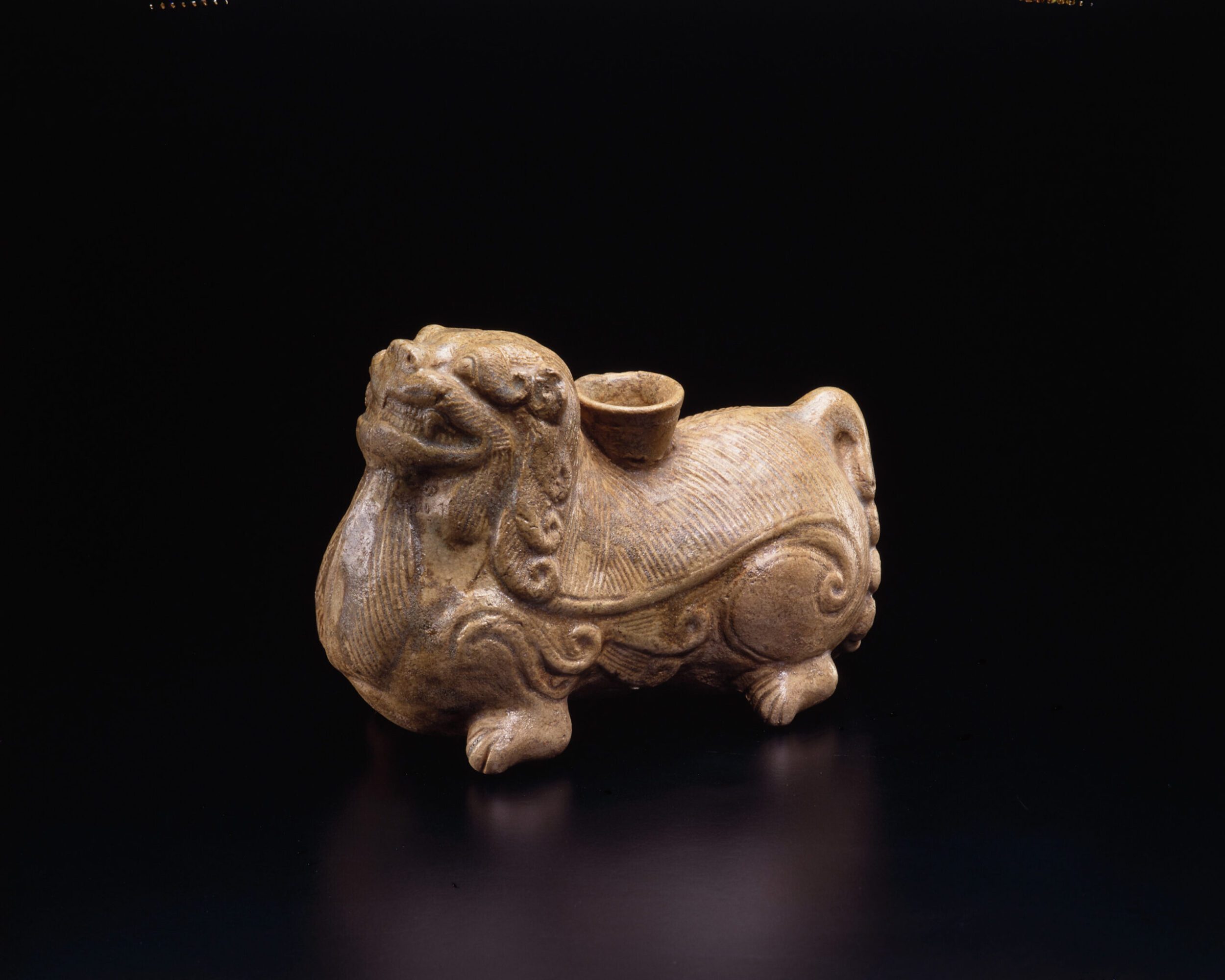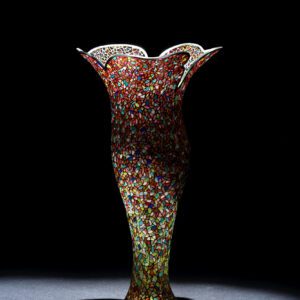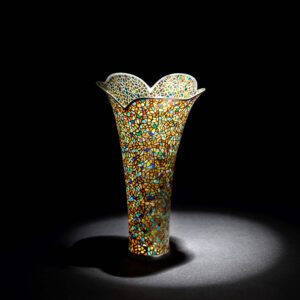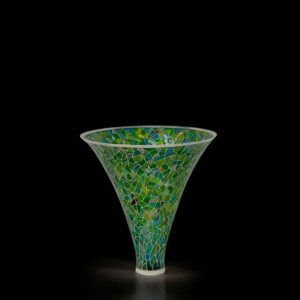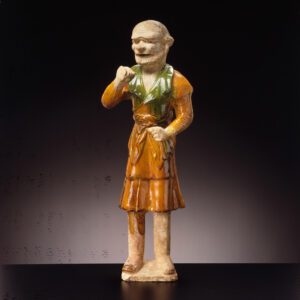The Chimera, or ‘bixie’ proudly standing in a recumbent pose on four clawed feet, head held high with its open mouth revealing two rows of fangs. The figure is finely decorated with a modelled mane extending over the back of the animal with further features carefully incised on the body. The animal overall covered in an olive-green glaze.
A ‘Yue’ celadon-glazed ‘bixie’ waterpot (Western Jin dynasty, 265-316 AD)
Description
Dimensions: 14.2cm long
Provenance:
Spink & Son, London, 20 March 1986 (invoice)
A private Belgian collection
The Chimera, or ‘bixie’ proudly standing in a recumbent pose on four clawed feet, head held high with its open mouth revealing two rows of fangs. The figure is finely decorated with a modelled mane extending over the back of the animal with further features carefully incised on the body. The animal overall covered in an olive-green glaze.
Moulded Yue-ware vessels like the present example were made in large quantities in the Jin dynasty (265–420 AD). They would have been produced in two halves, the joint still visible on the animal’s muzzle, with the legs attached separately. However, the exact function of this particular Yue-ware example remains unclear. The aperture on the back of the body of the ‘bixie’ may have held a candle, a possible prototype lamp or candle holder can be seen in the Ashmolean Museum, Oxford, but it has been previously suggested instead scholars used the vessel to dip their writing brushes in the water-filled interior.
In the Jin dynasty, mythical lions, with exaggeratedly curled manes, and winged chimeras were protective images. Although this particular form was only first produced in the mid-third century, they clearly refer to past depictions, for instance in Han funerary ware where huge stone examples guarded important tombs.
Compare an identical example in the collection of the Smithsonian National Museum of Asian Art, accession number F1919.93. A similar example was offered at Sotheby’s New York, 19 March 2024, lot 292.
